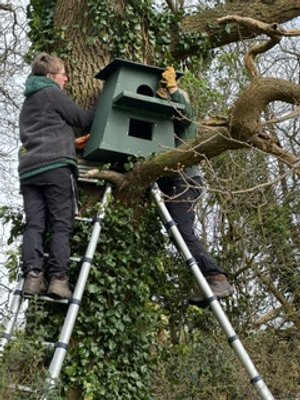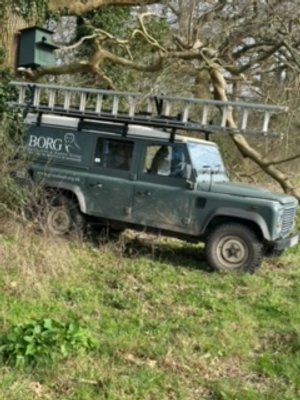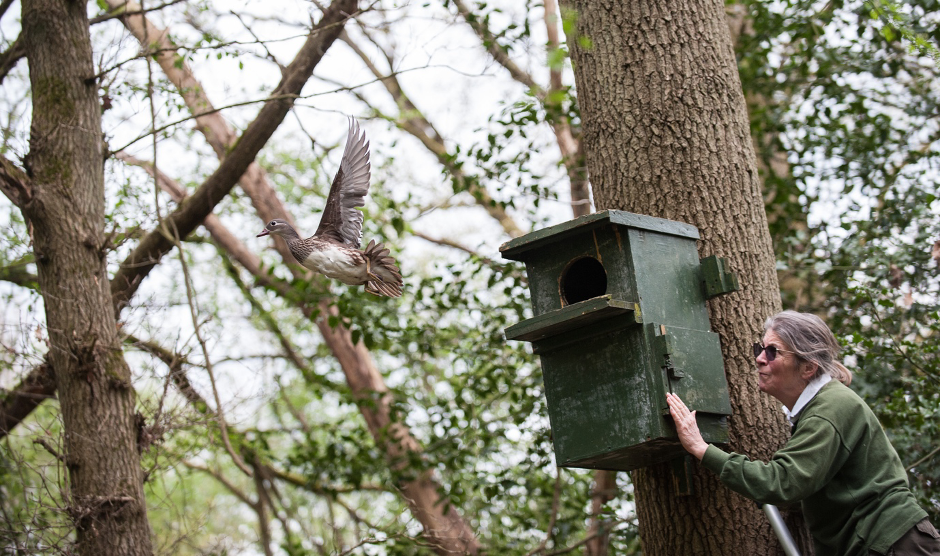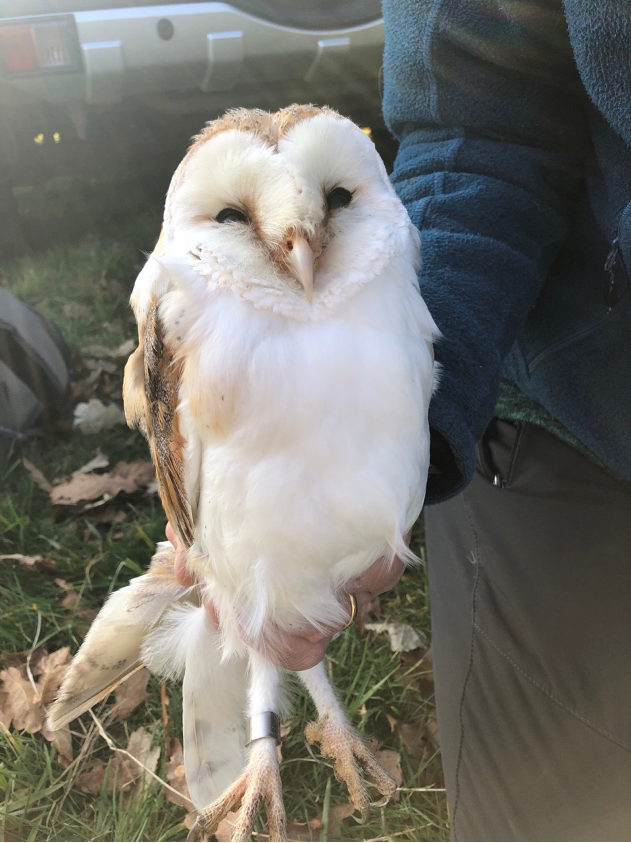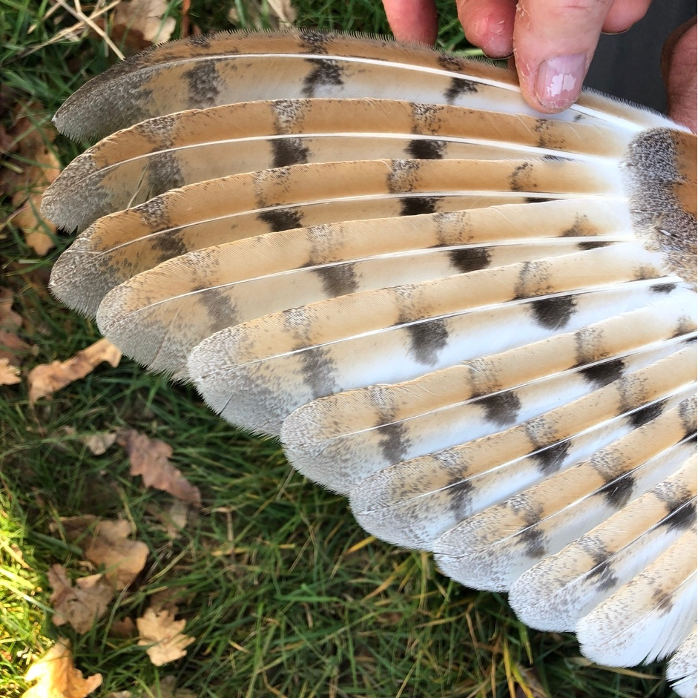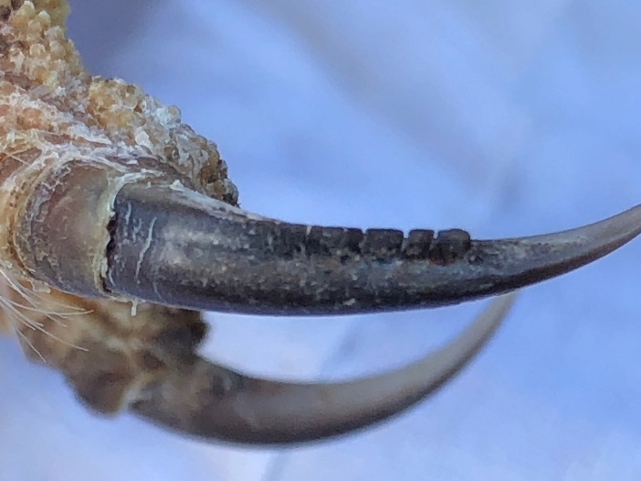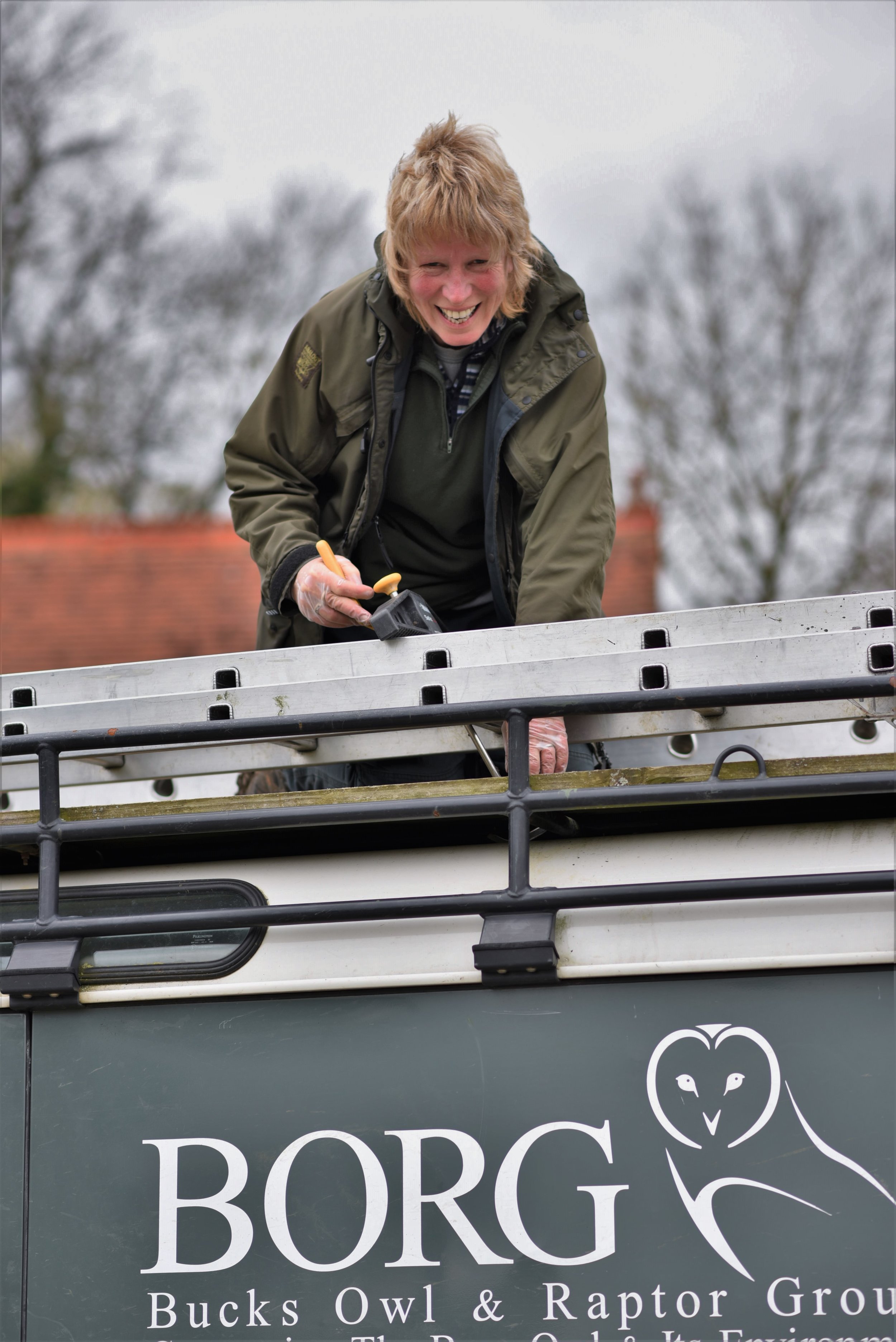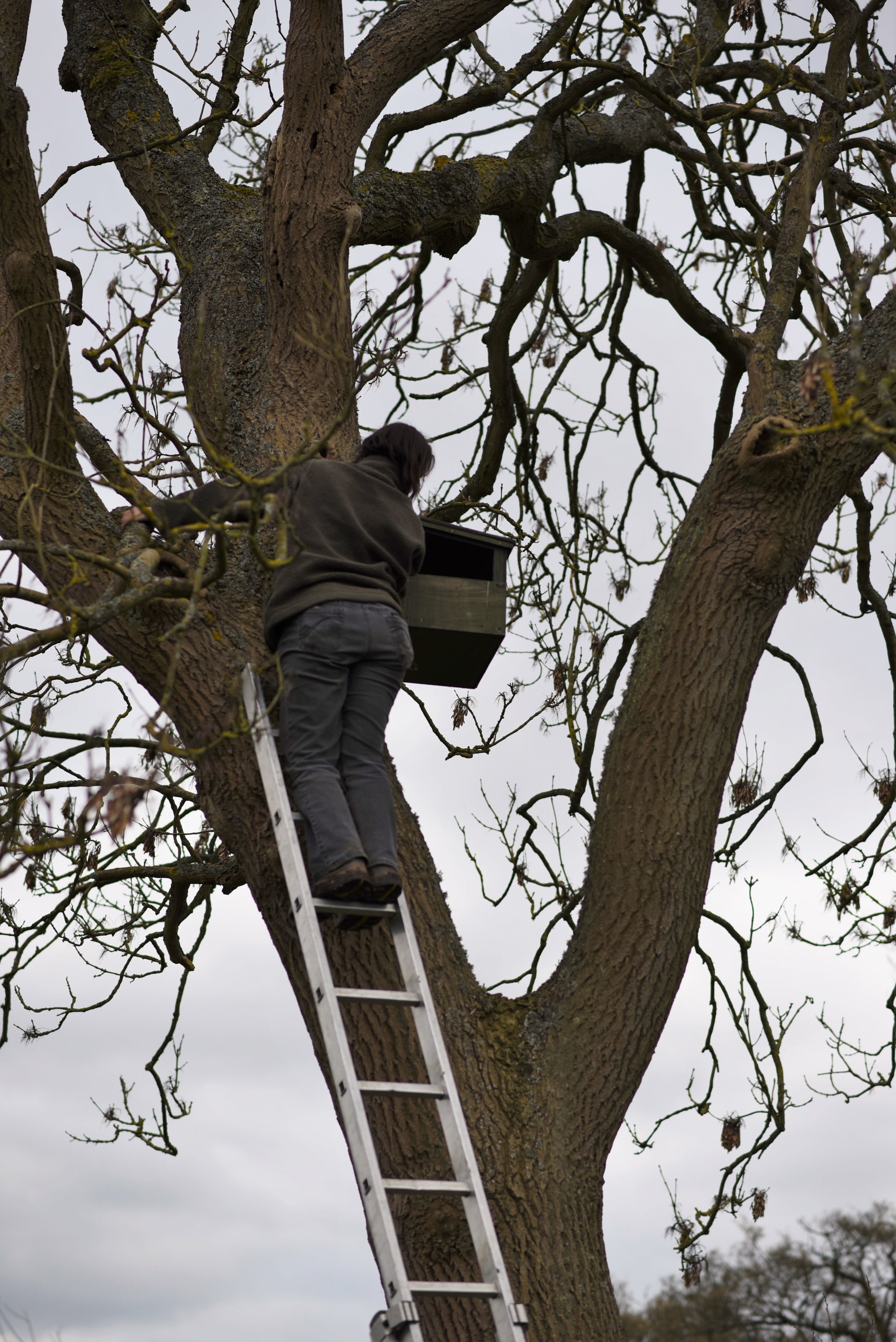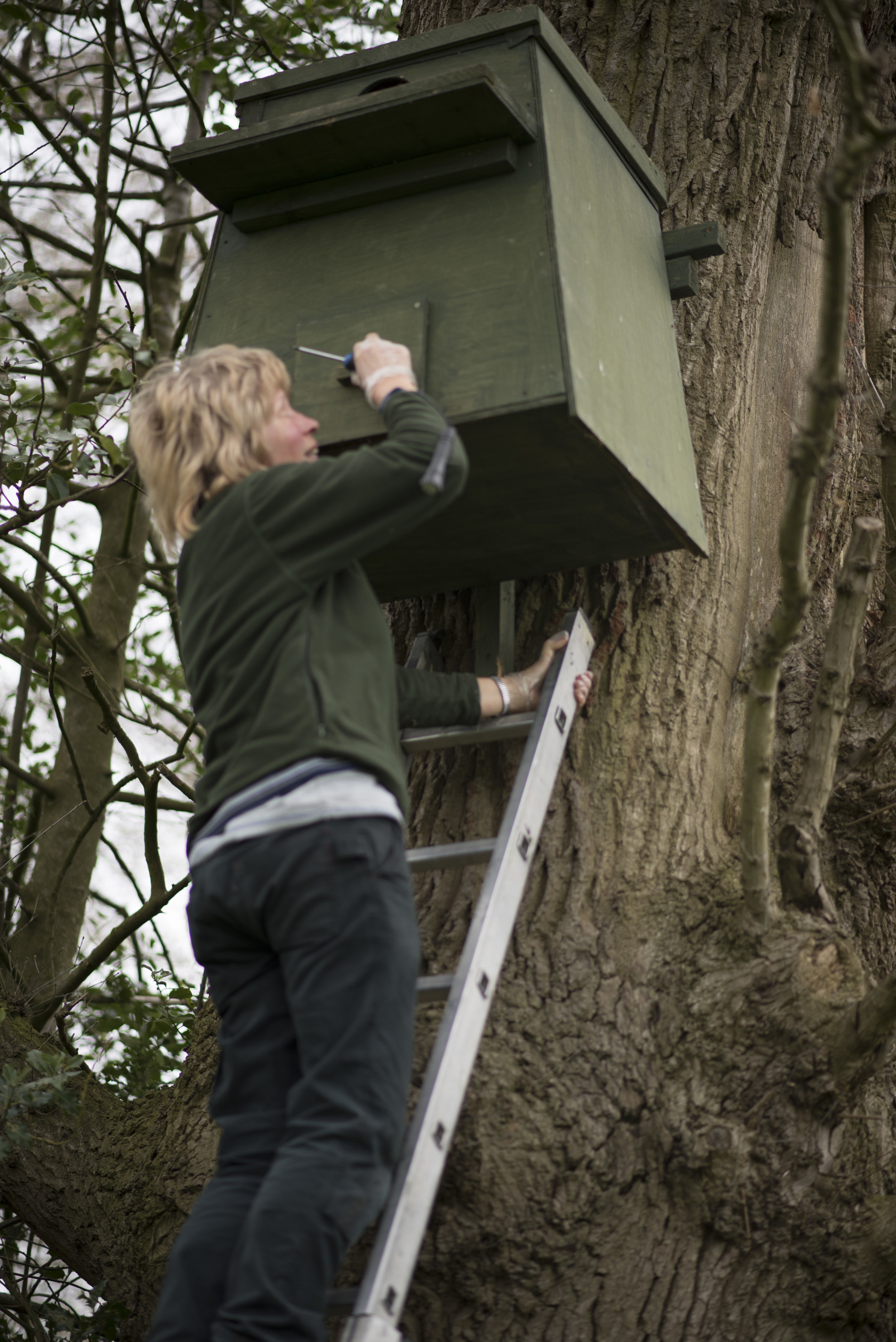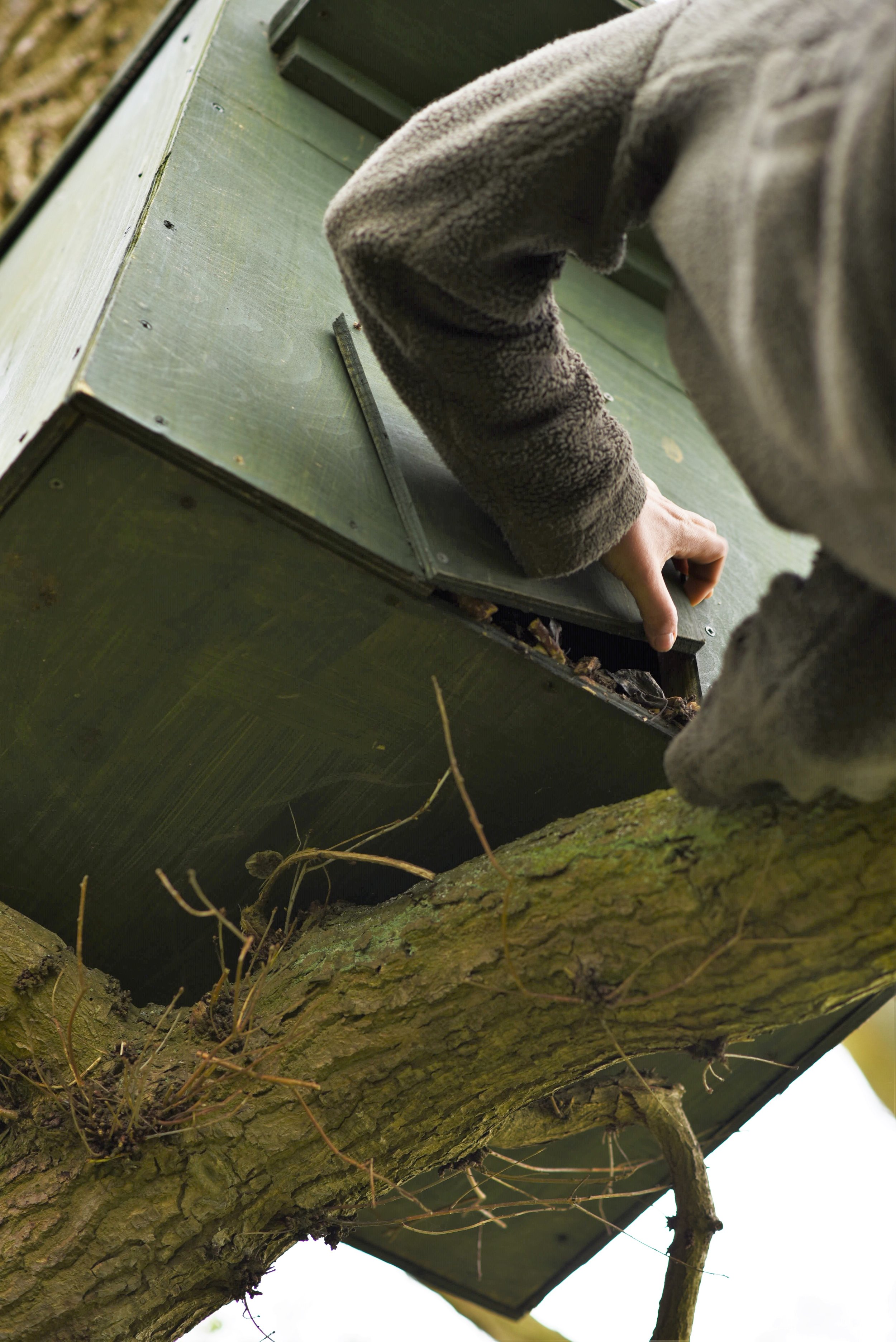OWL & KESTREL PROJECT
Owl Update Spring 2024
Lynne and Claire from BORG visited on 22nd March 2024. They came to investigate which barn owl boxes need replacing on Christine’s farm. The top field box had a barn owl in residence so the box was left in place and a new one will possibly be fitted nearby later in the year. The valley box was replaced after evicting the squirrel who was in residence.
There were owl pellets in both boxes allowing Lynne to collect some for her local school where the teacher was planning for each of 15 children to dissect them. They will send the results to BORG.
It was particularly good to hear that there is a resident owl in one of the boxes on Christine’s land. Barn Owls do not have oil on their feathers to repel water so they cannot hunt in wet weather. This will have made life very tricky for them given the weather lately! Over the previous years Christine had regularly seen Barn Owls at dusk but has not seen them recently. Last year we had no Barn Owl chicks and we were not alone. The following message from Bucks Owl and Raptor Group explains why this was the case:-
BORG Monitoring News for 2023:
“We have over 650 boxes throughout the county. However, availability of monitors this year was limited, so we tried to prioritise depending on previous successful use and whether it was a new installation.
The prolonged cold in the winter and a wet and chilly spring meant that Barn Owls took a while to get into breeding condition. The first box checks in May found barn owls paired up in nest boxes but very few had started to lay. This ties in with reports from groups in the West Midlands, Berks and the South West that nesting was delayed, and that some adults decided not to breed at all. The three nests that did hold eggs in May all failed, probably due to the lack of rodent prey. The majority of our birds that did nest laid eggs in late May/June with chicks hatching in July and August. At that time the weather was warm but unsettled, with lots of showers, which would have made hunting tricky. Clutch sizes were fairly small, with an average of 4.1 eggs per nesting attempt. The largest we found were two clutches of 7 eggs, which produced 3 and 4 chicks respectively. The majority of the successful nests held 2 or 3 chicks and we only had three nests this year that fledged more than that, with 4 chicks each.
Two of these boxes were sheltered within barn buildings, including a box at the National Trust site near Bradenham that had a live video feed into their office. A late nest with eggs still in September was successful and we ringed our last chick on 11th October. Overall, it was not a bad year; Barn Owls can be flexible to take advantage of the fluctuations in mammal prey and this year some birds bred later in the summer when the numbers of voles and rats had increased; others decided to keep their strength for their own survival. Hopefully these birds will get a chance next year.”
BORG Spring Report 2023
After their visit in February which was reported below BORG have returned twice. On the first of these visits, they reported that they had found tawny owls in each of the boxes on the Commons and they were astonished to find an old box occupied by this bird!! Steve Thomas, BORG’s photographer was able to capture this image as it flew out. Yes, it is a female mandarin duck!
On a visit on 12th May, they were able to ring the little tawny chicks on the Commons. So far there are no signs of kestrel eggs on Christine’s farmland though the adults are using the box. Lynne and Clare were excited to hear what they think is a tree pipit in the hedge near to the kestrel box.
They hope that the barn owls are late in breeding since they would be having problems feeding their young at present. They cannot hunt in the rain as their feathers become water logged.
Give a Hoot
We are very fortunate to have had regular visits from BORG since 2014. Their work is all done by volunteers and they erect, repair or replace boxes as well as ringing any Barn Owls, Tawnies, Little Owls or Kestrels that they can. Please watch our short video below showing their work with Tawnies on Hawridge Common and Barn Owls on Christine’s farm nearby.
To find out more about BORG please check out their website www.giveahoot.org.uk.
Their Mission Statement reads ‘The Bucks Owl Raptor Group exists to further the interests of Owl and Kestrel conservation within Buckinghamshire. We do this through recording, monitoring, educational work, practical conservation and provision of advice. We work closely with other birding groups and under the guidance of the British Trust for Ornithology.’
Their website shows ways in which you can help them carry out this wonderful work and meet expenses such as running their 4X4 vehicle. You can become a member, give a donation, sponsor a box or become a volunteer.
Owl Box Monitoring February 2023
Lynne Lambert and her colleagues from BORG came in mid-February to check the various nesting boxes on the Commons and also on Christine’s farmland. Obviously, it was a bit too early for nesting birds but they cleared out a nest on the Commons which had been used by Jackdaws last year and they mended a Barn Owl box on Christine’s land. They also had the added bonus of finding a male adult in one of the boxes which they were able to ring.
Sexing a Barn Owl can be done by looking for flecking on the underparts of the bird with male underparts generally uniformly white and female underparts generally heavily speckled with black, grey or brown flecks. The flecking becomes apparent in females, or is absent from males, from approximately 30 days old, enabling many chicks to be aged when ringed.
HCCPS working with Bucks Owl and Raptor Group (BORG) Video Spring 2022
At the AGM in December 2021 we showed a little video which demonstrates some of our work with Bucks Owl and Raptor Group (BORG) since 2013. It shows footage of the successful ringing of some young Tawny Owls from the box roughly opposite the school and some Barn Owls on Christine’s farmland. We are very grateful to Michelle Storm for putting our material together.
We do hope that you will have a look at the video. If you need something to lift your spirits this is guaranteed to do it! Some comments from people who have already viewed are ‘stunning!’, ‘gorgeous!’, ‘lovely!’ Do watch it!
Christine and Lindsay have been really privileged to see the work that Lynne Lambert and her team do as volunteers under licence from the British Trust for Ornithology and it is really encouraging and uplifting to see what goes on behind the scenes on the Commons and nearby on Christine’s farmland. We hope to share the video with the school children and BORG plan to use it too. We also hope that this will be the first of several short videos which will feature our work with other groups and individuals.
Owl update July 2021:
Lynne Lambert and a colleague from Borg (Bucks Owl and Raptor Group) came back to check the barn owl box on Christine’s farmland and found three chicks which were at the right stage to be ringed. This is impressive since the adults cannot fly in wet weather and so feeding the chicks in our recent erratic weather has no doubt been a challenge for the parents. We recently received a new trail camera from the Village Train Fund and we hope to use it to see if we can get footage of the Barn Owl activities. We also have plans to use it in Hawridge Vale to see if we can capture further photos of the polecat which Andrew Jordan found on his property.
Owl update March 2020
Lynne Lambert from Bucks Owl and Raptor Group (BORG) visited recently and found two Barn Owls in one of the boxes which we put up on Christine’s farmland. With plenty of unmown grass this land generally provides optimal conditions for small mammals and Barn Owls to thrive. However, the recent wet weather has been particularly trying for Barn Owls as they are unable to fly in wet weather since their feathers absorb water, unlike other raptor species. As a recent Times article pointed out ‘Unless they are desperate they avoid going out in the rain, as a sodden, cold owl can quickly die of hypothermia.’ Their need to forage for food when it is dry has meant that they have been seen quite frequently at dusk, which is a wonderful sight for us but a sign that they are hungry.
The Times article goes on to state that with numbers down by 70 per cent and only about 4,000 breeding pairs left in Britain, every Barn Owl is precious. About a third of all fledged Barn Owls are killed on motorways. A year or two ago one of the owls reared here was found by the roadside near Mentmore having been hit by a car. She suffered brain damage as a result, is unable to hunt for herself but survives in care.
A further hazard is rat and mouse poison. Recent government figures have shown that 90 per cent of Barn Owl carcasses contained rodenticide. Since a poisoned rat or mouse might take some time to die they become easy prey for a hungry owl with unfortunate unintended consequences.
It is really good to know that a breeding pair have survived here and we hope that our weather conditions will improve to allow them to raise chicks successfully again this year. The Tawnies on the Common are certainly active as well.
Owl Box Monitoring 2019
Bucks Owl and Raptor Group (BORG) volunteers, Lynne Lambert and her colleague, Karen have ringed two Tawny Owl chicks on Hawridge Common and have found a Barn Owl chick and 5 eggs on Christine’s farm.
Owl Box Monitoring 2017
Four tawny chicks were found in the Barn Owl box on the common. Tawnies leave the nest very young; they leave before fledging and sit around in the tree so another few days and we might have missed them. We were lucky to catch them at just the right age for ringing. Thanks to BORG for monitoring our boxes.
Owl Box Monitoring 2016
In late April Lynne Lambert from Bucks Owl and Raptor Group and Emily from Ashridge Estate came to examine our nesting boxes on the Commons for any signs of activity but there were no external signs that they were being used. However, Lynne did point out that the raptors were nesting later this year and she has asked if local people would please keep an eye open for any signs that they may be being used and let us know. Owls may leave splashes of white faecal matter on the trees beneath their nest and there may be regurgitated pellets nearby on the ground.
INSTALLATION OF KESTREL, BARN OWL AND TAWNY OWL BOXES
Owl Box Project Launch 2013
After an excellent talk on British owls by Dave Short (Buckinghamshire Owl and Raptor Group) at our 2013 AGM, HCCPS embarked upon an exciting new project to help our raptors, especially focusing on barn owls and tawny owls.
Christine's Land Provides Perfect Habitat
The boxes on Christine’s land nearby were more successful. In late Spring 2013 Lynne Lambert recorded two Barn Owl eggs and on a return visit in early July she ringed four kestrel chicks. On her next visit in late July Lynne was delighted to find four barn owl chicks which she weighed, measured and ringed. Christine has had a very successful year with the new bird boxes, and the the Owl and Raptor group say it is largely down to the perfect habitat that she provides on the valley.


